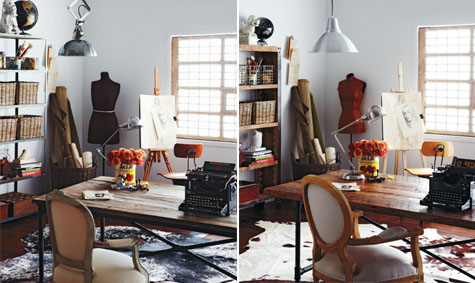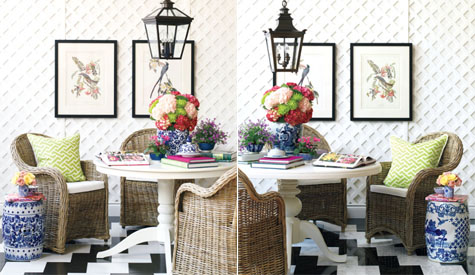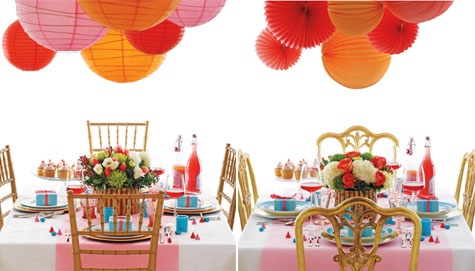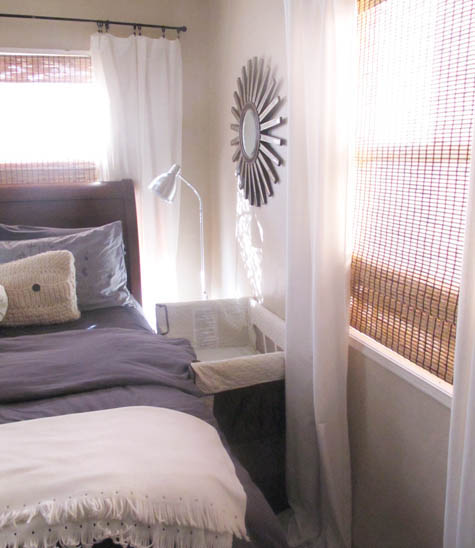Remember when our living room fireplace looked something like this? the mantel was in need of a makeover.
One day I’d like to either knock down the brick to expose an original (fingers crossed) fireplace or fill in the brick with plaster to create a Spanish-style fireplace to match the house. Until then though, my first thought was to create a solid beam look by fitting a wooden box to the top of the current mantel. Kind of like the last image in this post.
So… I took my ideas and layout to my local hardware store that has a milling department and we created a mitered edge box that was just what I had in mind. But it came back looking like this.
And now, we’re finally back on track!

First up is staining. Since different types of wood will each have their own unique look with different types and colors of stain, I flipped the wood mantel over and tried out three different stains. The perfect shade? We chose the red mahogany in the center.
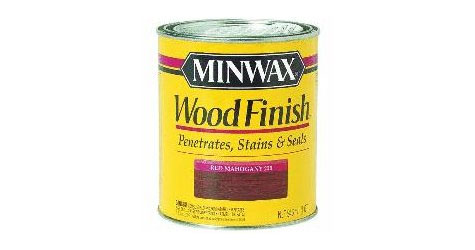
If our mantel had been cut from a softwood (uneven wood grain or blotchy patterns indicate that wood might be softwood), I would add a pre-stain wood conditioner to prevent an uneven covering (the conditioner seeps into the wood to create a consistent surface). Back when we were choosing materials originally, my carpenter friend recommended a vertical grain cut, this means that the growth rings run at 45 degrees and that the wood was quarter-sawn at the lumberyard – it increases the hardness by 20%, is a bit more expensive, but it looks beautiful.
Staining step-by-step:
1. Stir stain well.
2. With rubber gloves on, I used a brush (you can also use a sponge or old rag) to cover the bottom of the mantel. Applying stain to the bottom first means you don’t have to worry about dripping while the mantel is upside down! Or I should say the stain will still drip, but you’ll be covering it up when you stain the front – and cover it up quick, that dripping stain dries immediately. Next up is the top of the mantel and then finally the front, making sure to brush in one continuous movement in the same direction of the grain.
3. I then let the first coat of stain dry and reapplied several times.
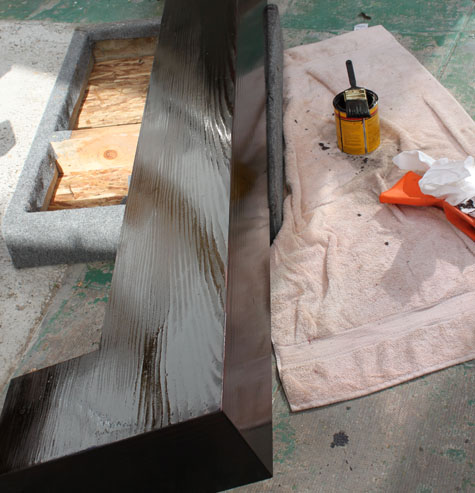
4. It’s a good idea to apply a top coat of polyurethane to seal in the mantel (and off gasses) and to protect it from water rings from future vases, wine glasses, etc.
5. The entire mantel stayed outside for 3-4 days to prevent any off gassing in the house.
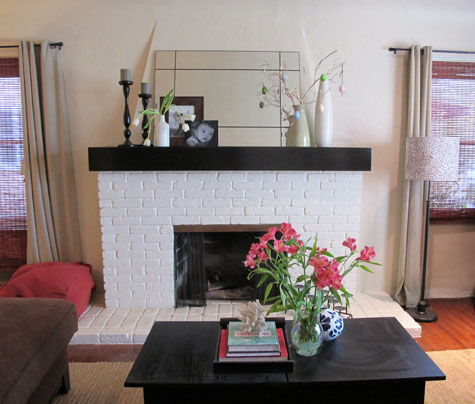
Here she is, all dressed for Easter! It makes such a difference in the room, I love it.
The extent of our Easter decorations this year is fresh flowers and beautiful hand blown eggs decorated by my Mom when she was my age.
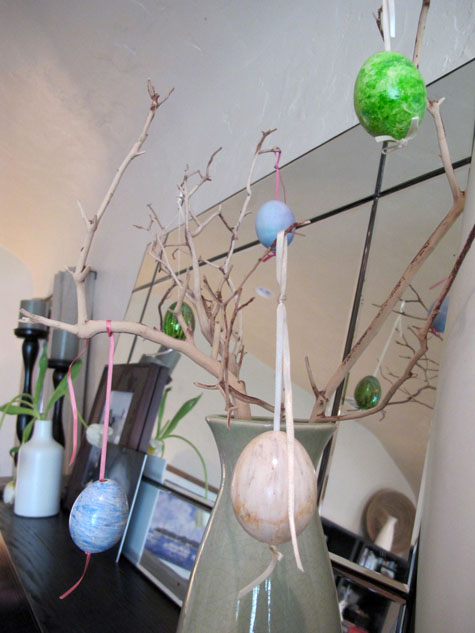
What a neat gift to pass down through the generations, right?
My dad recently sent us this picture that he took of Liv when she was just two weeks old, he had it mounted on photo board – I love her little expression and her little scrunched forehead. So alert when she was so young!
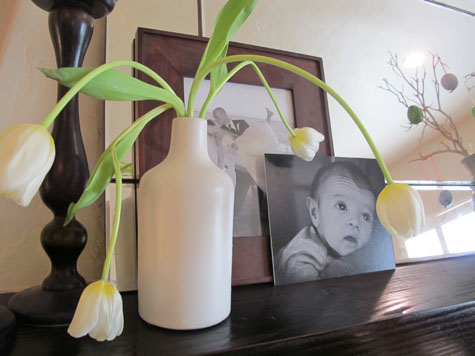
And now the living room has a brand new look!
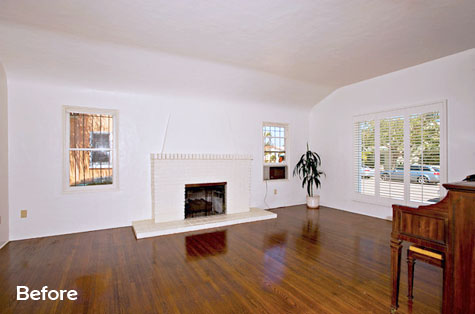
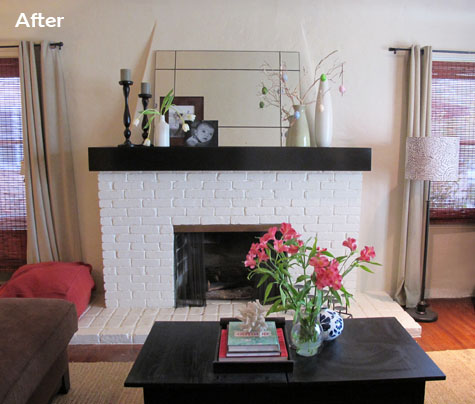
More living room posts: mantel progress, updating a fireplace mantel part 1, bookshelf styling tips, decorating in layers: stage 1, inspiration boards, picking the perfect couch, custom lampshade, coffee table-to-ottoman, and the‘before’ photos.



